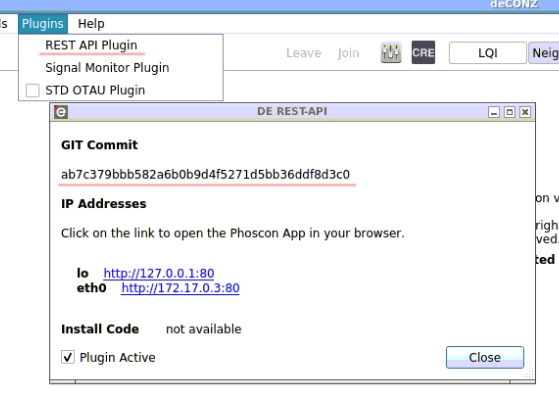This builds the deconz-rest-plugin and injects it into a new deconzcommunity/deconz docker image.
Only tested in amd64.
How to use it (example):
# Guarantee we work on latest deconzcommunity/deconz image
docker pull deconzcommunity/deconz
# Build new image
docker build -t my-deconz-image --build-arg PLUGIN_REPOSITORY=https://github.com/dresden-elektronik/deconz-rest-plugin.git --build-arg PLUGIN_GIT_COMMIT=f52b882536358bd7c722a8fa9894d283cbcaa6d5 .
Arguments:
- PLUGIN_REPOSITORY (optional, default: https://github.com/dresden-elektronik/deconz-rest-plugin.git) - If you are testing a fork, just set it to your repository.
- PLUGIN_GIT_COMMIT (optional, default: master) - In the repository mentioned in PLUGIN_REPOSITORY, which commit do you want to test? Here is where you put the commit hash.
Once built, you can run it exactly the same way as you would run a deconzcommunity/deconz image - just replace the image name with my-deconz-image.
Example:
docker run -d \
--name=deconz \
-p 80:80 \
-p 443:443 \
-p 5900:5900 \
--restart=always \
--device=/dev/ttyUSB0 \
-e DECONZ_WEB_PORT=80 \
-e DECONZ_WS_PORT=443 \
-e DECONZ_VNC_MODE=1 \
-e DECONZ_VNC_PORT=5900 \
my-deconz-image
Once your docker image is successfully started, you can access it with a VNC client (e.g. Remmina) on port 5900. In the GUI, access plugins->rest plugin. In the window that opens, you should see the commit hash that you mentioned in the docker build command:
